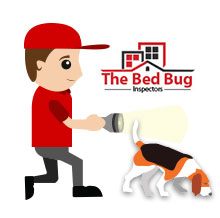Article Contents
What colors are bed bugs attracted to
A study from Journal of Medical Entomology shows that bed bugs are attracted to certain colors more than others. What colors attract bed bugs? As other insects such as bees and wasps, bed bugs are attracted to certain colors and avoid others. The study found that bed bugs are more attracted to the colors red and black and tend to stay away from color hues that include green and yellow.
Short-wavelength colors such as violet (hematoxylin 0.005% solution) and bluish-green (fast green 0.001%) were preferred compared with the other colors tested. Red (eosin 5%) had attractive qualities, while yellow (Bouin’s solution) appeared to be the least attractive. More recent studies by Singh et al. (2015) have also shown that aggregations of specifically adult male bed bugs and third–fifth-instar bed bugs prefer black and red harborages compared with other tested colors. (Journal of Medical Entomology)
At first scientists believed that the bed bugs were attracted to red because it looks like the color of blood, but upon further investigation it is believed that bed bugs were more attracted to the colors of red and black because those colors resemble the colors of bed bugs.

Picture of baby bed bug just fed. We can notice when we see the red color (blood)
Bed bugs want to be by other bed bugs, so they tend to gravitate more towards these colors. The study also showed that bed bugs respond to different shades of color as they get older. The baby bed bugs in the study didn’t show signs of preference in any color.
Where do Bed Bugs Hide During the Day?
Whether you have black, red or other color bedding will not always determine if bed bugs are in your home or not. They are resilient pests that will thrive in any home if they are given the opportunity. Your home provides many different areas for bed bugs to hide out, going undetected from the human eye for quite some time.

Bed bug infestation
Bed bugs are able to enter into your home undetected through luggage, clothing, used furniture and other items. The small, flat size and shape of a bed bug makes it very easy for them to fit into tiny spaces. Bed bugs do not have nests like ants and other insects do, but they tend to live in groups in various hiding places throughout your home. The most typical hiding areas for bed bugs inside of your home include mattresses, box springs, bed frames, headboards, sheet seams and other areas. These hiding places give bed bugs easy access to people to feast on at night.
Signs of Bed Bug Infestations Inside of Your Home
There are several signs to look out for that point to a possible bed bug infestation inside of your home. If you have noticed small blood stains on your sheets or pillowcases, it is likely that you have a bed bug problem. After a bed bug has engorged itself on your blood, they will leave small blood stains on your sheets or pillows as they crawl back to their hiding place. Bed bugs will also leave rust colored excrement on your sheets and mattresses.
If you find bed bug fecal spots, egg shells, or exoskeletons around your bed, or other areas of your home then you are sure to have a bed bug infestation. Another sign that indicates a bed bug infestation is an offensive, musty odor that comes from the bed bug’s scent glands. One of the most obvious signs that your home may be suffering from a bed bug infestation is waking up with bites on your skin. Bed bug bites typically form a small line, are very itchy and can become quite irritating.
Learn with The Bed Bug Inspectors
- When Do Bed Bugs Come Out?
- Bed Bug Feces: How Harmful Is It?
- Bed Bug Guide: Steps to Take If You Suspect a Bed Bug Infestation
- Bed Bugs Symptoms
- Where Do Bed Bugs Come From?
- 5 Types Of Bed Bugs And How To Identify Them
- What Are Some Bugs That Look Like Bed Bugs?
- How Long Can Bed Bugs Live
- How Do Bed Bugs Spread?
- The Bed Bug Life Cycle


